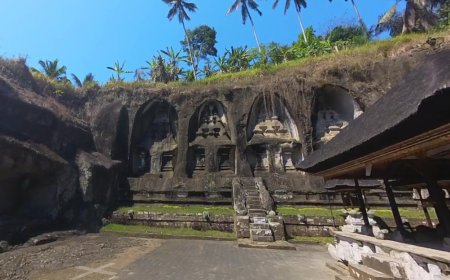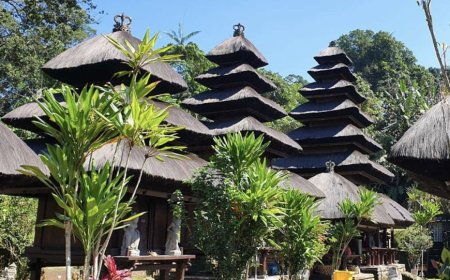Pegulingan Temple: Traces of Buddhism and Hinduism Uniting in the Land of Bali
Pura Pegulingan, an unexpected discovery during construction in 1982, is an ancient temple in Bali, believed to have been built in the 11th century AD. Buddhist artifacts, such as mini stupas and pripih boxes with Sanskrit mantras, were found during the excavation. Its layout reflects both Buddhist and Hindu teachings, and discoveries like Buddha statues and inscriptions add to the historical richness of this temple, providing unique insights into the historical development of Buddhism in Bali.
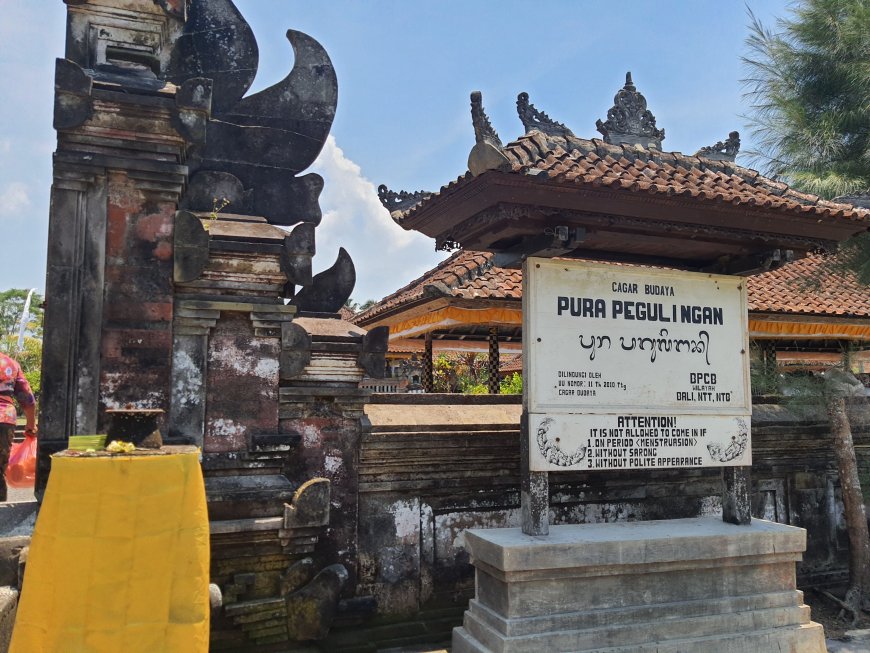
Pura Pegulingan is an ancient temple located in the village of Manukaya, Tampaksiring District, Gianyar Regency. The temple is not far from the surroundings of Tirta Empul Temple in Tampaksiring. The position of the temple is also very strategic as it is located in a rice field area, providing a beautiful natural panorama indirectly.
According to the Lontar Usana Bali, this temple is estimated to have been built during the reign of King Masula Masuli in Bali in the 11th century AD or the Saka year 1178. The Pura Pegulingan site was discovered in 1982 when the community intended to build a grand Padmasana Agung at that time.
While the villagers were excavating to create the foundation for the magnificent Padmasana temple, they discovered artifacts. Upon learning of this, the local bendesa adat (village official) ordered the work to be stopped and reported the findings to the local authorities.

The Gate of Pura Pegulingan Temple (Source Photo: Private Collection)
In 1983, the Suaka Peninggalan Sejarah dan Purbakala, an archaeological organization now known as the Cultural Heritage Preservation Center (BPCB), conducted preliminary research. They found the foundation stones of a Buddhist stupa, inside of which stood a mini stupa about 80 centimeters in height.
Additionally, a pripih box was found containing 62 clay stamps, metal plates, and numerous fragments of a single bronze bowl. The stamps bore mantras written in Sanskrit and Pre-Nagari. Similar to pripih boxes found at Gunung Kawi, these were traditionally used near monuments, such as temples, to facilitate religious ceremonies and rituals.
Various other religious paraphernalia were also found, including a vajra, an incense burner, and various fragments of Buddhist statues. Overall, the collection of artifacts suggests the existence of a thriving Buddhist community in the same era as the great Balinese kings who built the nearby Gunung Kawi and other significant monuments.
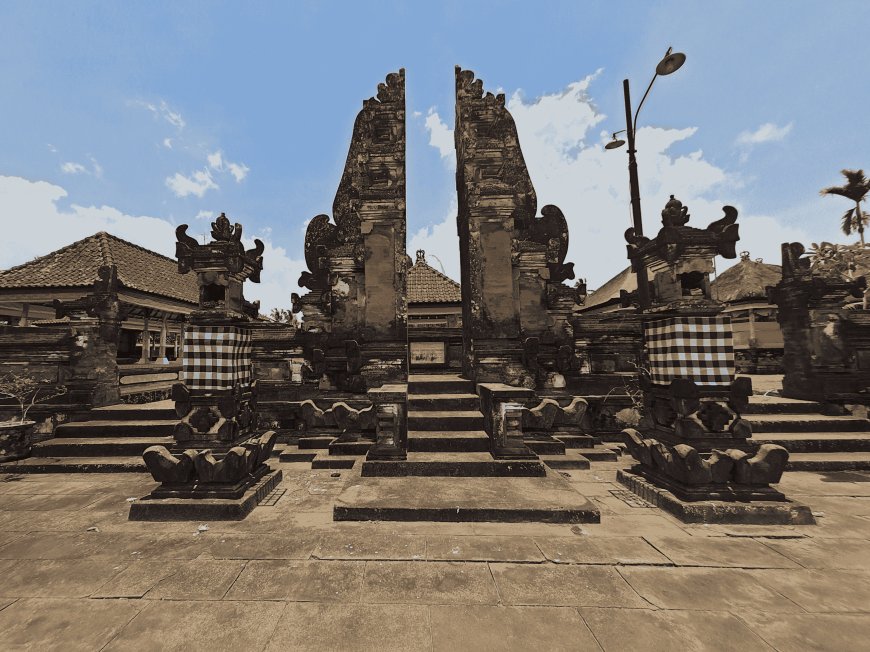
Madya Mandala or the Middle Courtyard of Pura Pegulingan (Source Photo: Private Collection)
In addition to the stupa, Pura Pegulingan also includes several dozen other structures. These are organized into three mandalas (courtyards) known as the Nista Mandala (outer courtyard), Madya Mandala (middle courtyard), and Utama Mandala (inner courtyard). From a Buddhist perspective, this tripartite layout recalls the "three realms," comprising the Desire Realm (kāma-loka), the Form Realm (rūpa-loka), and the Formless Realm (ārūpya-loka).
From a Hindu perspective, it may reflect the teachings of Tri Kaya Parisudha, a philosophy that encourages benevolent deeds, good speech, and rightful thoughts. However, as Balinese temples generally consist of two or more courtyards (with three being normative), it may simply reflect the traditional layout of Balinese temples with progressively more sacred zones as one moves deeper into the monument.

Padmasana Temple of Pura Pegulingan (Photo Source: Private Collection)
Here are the findings from the research conducted by the Office of Historical and Archaeological Preservation at Pura Pegulingan:
1. Buddha Statues
There are estimated to be five Buddha statues at Pura Pegulingan, made of andesite stone. However, during excavation, only four damaged statues were found.
a. The first statue, assumed to have a dharmacakramudra hand gesture, is associated with Dhyani Buddha Vairocana in the central position.
b. The second statue, assumed to have a bhumisaparsamudra hand gesture, is associated with Dhyani Buddha Aksobhya, who governs the east.
3. The third statue, assumed to have an abhayamudra hand gesture, is associated with Dhyani Buddha Amoghasidhi, who governs the north.
4. The fourth statue, assumed to have a dyanamudra hand gesture, is associated with Dhyani Buddha Amitabha, who governs the west.
5. The fifth statue, assumed to have a waramudra hand gesture, is associated with Dhyani Buddha Ratnasambhava, who governs the south.
2. Inscriptions
The discovered inscriptions at Pura Pegulingan consist of clay seals and gold sheets. Among the clay materials are the Ye-Te Mantra Formula in Pranagari script and Sanskrit language, which is a Mahayana Buddhist mantra about the three teachings of Dharma.
Reliefs were also found on the octagonal center foundation, depicting two elephants facing each other and standing on the left and right sides of a gate. In the stupa chamber, there are gold Buddha statues, gold sheets, silver, and bronze, as well as pedagingan (sacrificial offerings).
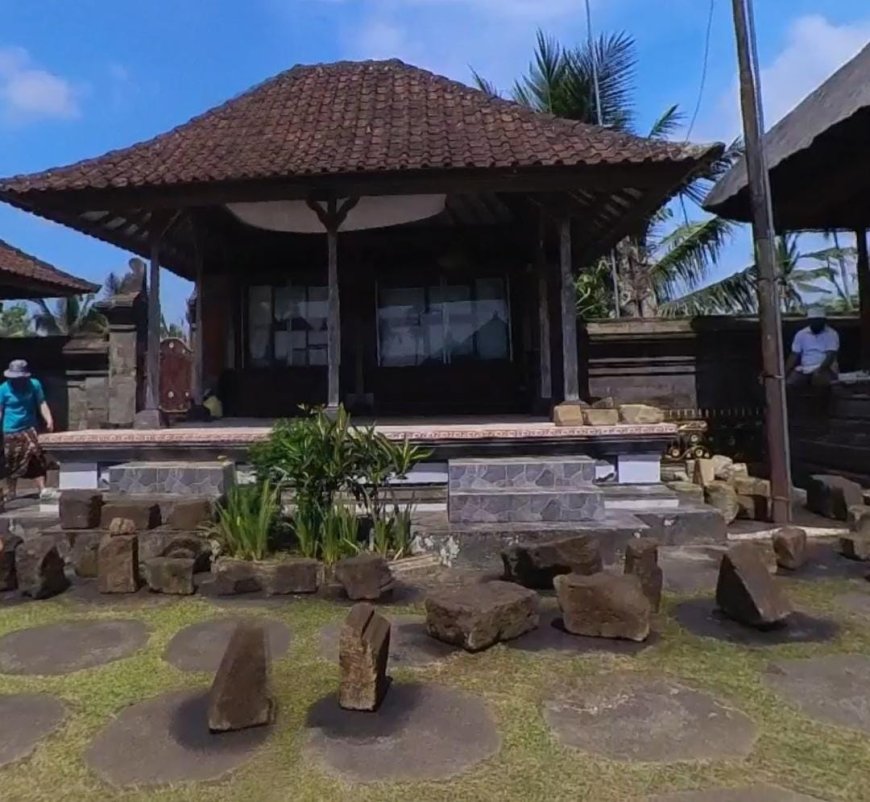
Stupa Discovery of Pura Pegulingan (Source Photo: Private Collection)
Cultural heritage possesses fragile, unique, rare, limited, non-renewable, and vulnerable qualities, susceptible to threats from both natural factors and human activities. Therefore, conservation efforts for cultural heritage are crucial as a means to address damage by maintaining its preservation, as commonly undertaken by the Bali Cultural Heritage Preservation community along with local residents in the Pura Pegulingan area.


















































